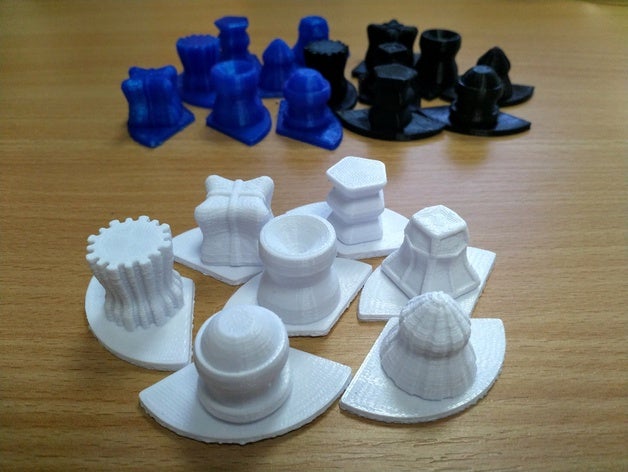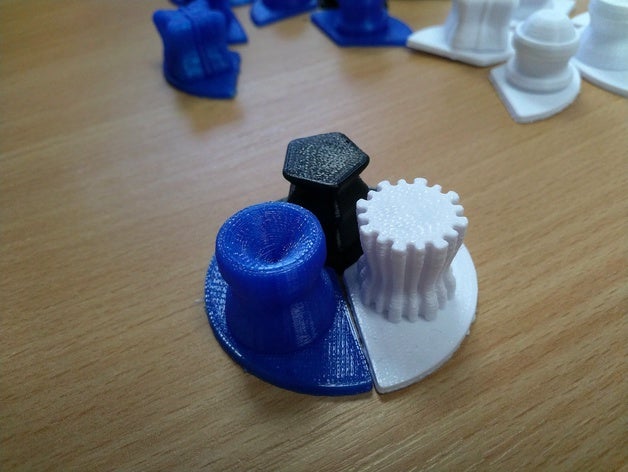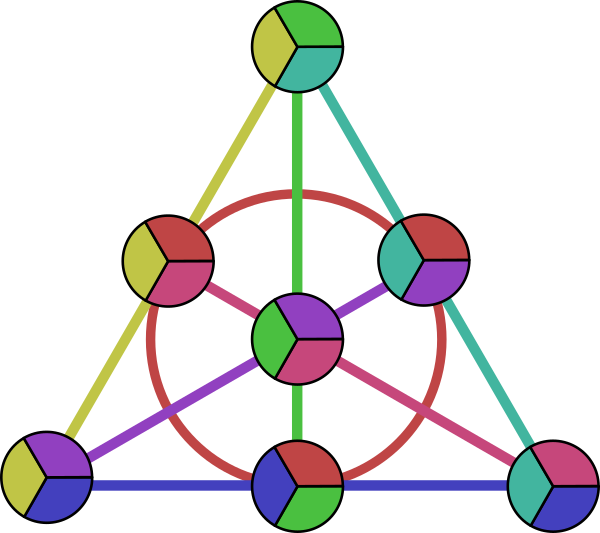At work we’ve got a 3D printer. In this series of posts I’ll share some of the designs I’ve made.

There are seven kinds of shape. There are three copies of each shape. The pieces like to group together in threes.
Can you arrange the pieces into seven groups of three so that for each possible pair of shapes, there is one group containing that pair?
Try to do it without paying attention to colours first, then try to rearrange the pieces so each group has a piece of each colour in it.
The rest of this post contains spoilers for the puzzle.

The genesis of this puzzle was the fact that in the Fano plane, every point lies on three lines. So if you give the lines names, a point is identified by the names of the three lines it’s on.

My first idea was just to make a collection of seven pieces, such as cubes, tetrahedra, cylinders, etc. After printing them out, I noticed a few problems: the smooth shapes were quite hard to hold, and kept slipping out of my hand; it’s hard to quickly differentiate a hexagonal prism from a heptagonal one; the rule about putting pieces together in groups of three was quite hard to explain.
We had a little brainstorm about different ways of framing the puzzle so that it was easier to work with. One good suggestion was to have seven events at the Olympics, with each country winning medals in three events. Then the pieces would be little athletes that would stand on seven podiums. We realised that we’d either need seven colours for seven countries, or gold/silver/bronze, and add a rule that each country won one of each kind of medal, but never two medals in the same event. In the end it all felt a bit too complicated.
So I decided to go back to , I set to work in Blender making a new set of shapes. I played with all the funky modifier tools to make the shapes as distinct, and as textured, as I could. Finally, I put each piece on a base in the shape of a third-circle, so they’d naturally fit together in threes.
I’ve tried the puzzle out on a few people, and I’ve got pretty good feedback. Professional mathematicians normally solve it quite quickly, but don’t necessarily see the link to the Fano plane, while the other people I’ve tried it on take quite a bit longer but normally get there without many hints.
I’ve seen a few different techniques for finding the solution, but the most fascinating thing has been the names that people come up with for the pieces. The only one that everyone seems to agree on is ‘Christmas present’. Names for the other pieces include ‘haystack’, ‘goblet’, ‘egg cup’, ‘pagoda’ and ‘tree’.
You can download .stl and .blend files for the seven triples puzzle at Thingiverse.
One Response to “My adventures in 3D printing: Seven Triples puzzle”